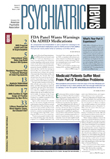In 2001 Suck Won Kim, M.D., a professor of psychiatry at the University of Minnesota, published results of a trial exploring the possible value of treating pathological gambling with the opiate antagonist naltrexone. Naltrexone was found to be superior to a placebo in countering symptoms of the disorder. However, the medication caused liver enzyme problems in subjects who took over-the-counter pain medications at the same time.
Subsequently, Kim helped other pathological-gambling investigators design a study to learn whether the opiate antagonist nalmefene, which is related to naltrexone but purportedly safer, might also counter symptoms of pathological gambling. “Results are quite promising,” lead investigator Jon Grant, M.D., J.D., an associate professor of psychiatry at the University of Minnesota, recently said (Psychiatric News, March 18, 2005).
The results of this study are published in the February American Journal of Psychiatry.
The study took place at 15 outpatient treatment centers throughout the United States. Subjects were recruited via newspaper ads and medical referrals. The researchers ended up with 207 individuals who met criteria for a DSM-IV pathological gambling disorder.
The 207 subjects were then randomized to receive, over a 16-week period, 25 mg daily of nalmefene, 50 mg daily of nalmefene, 100 mg daily of nalmefene, or a placebo.
The primary outcome measure was the Yale-Brown Obsessive-Compulsive Scale Modified for Pathological Gambling, which is used to rate gambling thoughts, urges, and behaviors within the previous week. Subjects were assessed with it throughout the study. For overall treatment response, subjects with a Clinical Global Improvement score of “much improved” or “very much improved” at the last available evaluation point were considered responders.
Fifty-nine percent of the 25 mg nalmefene group; 48 percent of the 50 mg nalmefene group; 42 percent of the 100 mg nalmefene group, and 34 percent of the placebo group were found to be responders (see chart).
Why the 100 mg and 50 mg nalmefene groups did not respond as well as the 25 mg nalmefene group is not clear. However, it may be because these higher doses caused more intolerable side effects.
So it looks as if nalmefene can reduce gambling symptoms in a number of pathological gamblers and that the ideal dose for doing so might be 25 mg a day, since this dose appeared to be quite effective while producing few adverse effects.
However, optimal dosing and titration can be determined only from further research, Grant and his colleagues pointed out in their report. The same is true for determining the optimal length of treatment.
“It is possible that a longer course of therapy could result in continued and even greater reduction in gambling symptoms,” they speculated.
Grant and his colleagues are currently conducting another study of nalmefene in pathological gamblers, he told Psychiatric News. This one is taking place at 20 different sites. Because it has obtained rights to nalmefene, Somaxon Pharmaceuticals in San Diego is also launching several trials of nalmefene to treat pathological gambling, Grant said.
Meanwhile, the results achieved from the just-published study illustrate that “psychiatry is finally gaining rational treatments for its illnesses, treatments based on demonstrated brain mechanisms,” Carol Tamminga, M.D., and Eric Nestler, M.D., Ph.D., wrote in an accompanying editorial. They are professors of psychiatry and neuroscience at the University of Texas Southwestern Medical Center.
In other words, they explained, the study was based on the hypothesis that pathological gambling is an addiction disorder and that a drug known to counter addiction could thwart pathological gambling as well.
“Multicenter Investigation of the Opioid Antagonist Nalmefene in the Treatment of Pathological Gambling” is posted at<http://ajp.psychiatryonline> under the February issue. ▪

